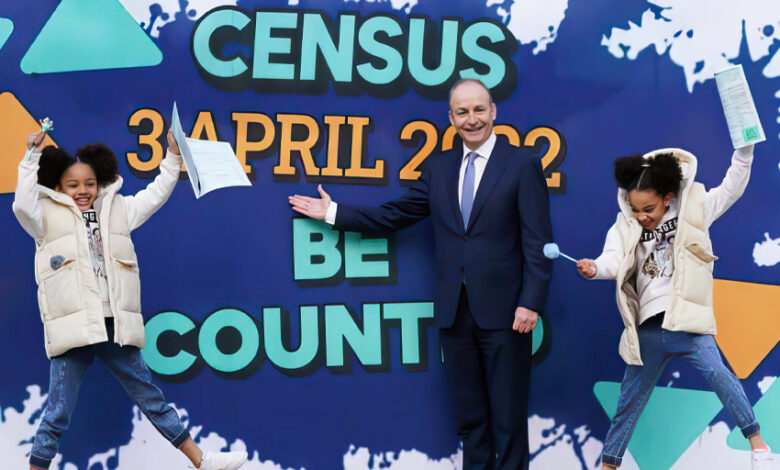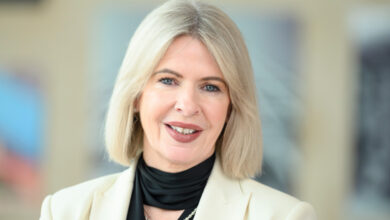Census highlights housing crisis

The results of Census 2022 have highlighted the increasing secularity of the State and pose some stark facts for decision-makers about the scale of Ireland’s housing crisis.
Census 2022 outlines that there are now 330,632 homes rented from private landlords, and the proportion of owner-occupied homes has fallen from almost 70 per cent to 66 per cent, in the 11 years to 2022.
Furthermore, among renters, those in the private sector have seen the biggest increases in housing costs. The cost of rent for private sector renters went up by 37 per cent between 2016 and 2022, to an average of €272.91 per week. Meanwhile, those in local authority housing, with arguably a far greater security of tenure, saw their rent increase by 14 per cent to an average of €77.92 per week.
The pressure being placed on private sector renters is exemplified by the fact that 109,000 households are paying €300 a week or more, which is more than double the figure (48,933) for 2016. In addition, there were nearly four times as many households paying €400 a week or more in 2022 than there were in 2016.
The 2022 Census also reported that the number of homes rented from local authorities increased by 7 per cent, to 153,192.
Minister for Housing, Local Government and Heritage Darragh O’Brien TD has stated that the trend of declining homeownership, consistent in every census since 1991, is “starting to reverse”.
The Census reports that the State has a homeownership rate of 66 per cent, which represents a 13 percentage point decline from the 79.3 per cent homeownership rate in 1991. Furthermore, in all of the recent censuses (1991, 2002, 2006, 2011, 2016, and 2022), the rate of homeownership has declined compared to the rate recorded in the prior Census.
Although it is yet to be seen if the Government’s Housing for All policy will lead to a reversal of this trend, as O’Brien has promised, the fact that the rate of homeownership has not kept pace with the economic recovery since the 2000s financial crisis can only be characterised as a failure in the sector.
A further point of interest emerged in that the average size of a household in the State is 2.74, which, according to the noted property company Savills, is “noticeably exceeding the European average of 2.2″.
Savills commented on the Census results that despite “a minor dip from 2.75 in 2016, the number has essentially stagnated, due largely to the scarcity of new housing supply”.
This represents what the company describes as “a staggering 32 per cent increase since 2016, and this shift has directly influenced the average household size, effectively holding it steady since 2016”. “The lack of new housing on the market has been instrumental in causing this shift, underlining the pressing need for new residential development.”
According to Savills, 453,000 homes would need to be constructed to bring Ireland in line with the European average and alleviate crowded households. The latest Housing for All progress report states that construction on 27,309 units commenced in the 12 months ending March 2023, which is 22 per cent below the prior 12-month period.
Religion and population
It is the first time in 171 years that the population of the State’s 26 counties have exceeded the five million threshold. There are 5,149,139 people in the State which marks an 8 per cent increase since 2016.
Although there is a notable trend away from Catholicism and Irishness in the State, it remains the most dominant religious background in Ireland by a considerable margin. In addition, whilst Ireland is seeing growth in its population, the rate of growth is not forecast to increasing by a considerable margin.
This is important to bear in mind as a study by Irish Economic and Social History has shown that if Ireland had not experienced the population decline attributed the Famine, that her population would most likely stand in the tens of millions, meaning that overpopulation does not present any immediate challenge to Ireland.
While much of the conversation about Census 2022 is how the population of the Republic of Ireland has breached five million, when the figures published are added to the Census 2021 figures from the North, the total population of Ireland now stands at 7,052,314. Pre-Famine, the population of Ireland was just over eight million, leaving Ireland’s population around 13 per cent short of its peak in the 19th century.
The increasing diversity of the State’s population is exemplified with the number of people with dual Irish citizenship, 170,597. This represents a 63 per cent increase from 2016. In addition, the proportion of the population who identify as Roman Catholic as their religion has fallen from 79 per cent in 2016 to 69 per cent in 2022.
Census data suggests that the number of people identifying with ‘no religion’ increased has by 57 per cent from 468,421 in 2016 to 736,210 in 2022. Irreligious people now represent 14 per cent of the State population.
This divergence from Catholicism is perhaps best exemplified in Dublin, where only 53 per cent of the population now identifies as Catholic, and where almost one-quarter (24 per cent) of the Dublin populations states that they have ‘no religion’.
This religious diversity is mirrored with an increasing racial diversity in the State, with 77 per cent of the overall population now identifying as ‘white Irish’, meaning that almost one-quarter of the State’s population are of an ethnic minority or immigrant background. Indeed, 16 per cent of the population of the State are not Irish, with 84 per cent of respondents having described themselves as such.
Irish language
On the Irish language, the Census results show that the number of people who indicated that they could speak Irish increased by 6 per cent between 2016 and 2022 to 1.9 million, or 40 per cent of the population aged three or more, although there was a marginal decrease in the number who have said they can speak Irish “very well”.
Green Party Waterford representative Marc Ó Cathasaigh TD has said that the Census 2022 figures on the Irish language represent “an opportunity to be grasped” and has encouraged people to engage with it. “There are so many ways to reignite your relationship with the Irish language, from ciorcal cómhrá to classes to just switching the dial on the radio,” Ó Cathasaigh said.
Key takeaways
Other points of interest in Census 2022 were that, in addition to the increase in population, there has been a marginal increase in the average age of the population from 37.4 in 2016 to 38.8 in 2022.
With the Covid-19 pandemic having accelerated a change in working patterns since 2020, the Census has found that approximately one-third of all workers (747,961 people) currently work from home for at least some part of their week.
The housing crisis continues to persist and has manifested itself most profoundly among those renting in the private sector, a demographic which tends to be among the lease economically prosperous. This entrapment in a high-rent lifestyle means that homeownership is continuing to decline. Whilst a number of initiatives from government are underway, time will tell as to whether these will reverse a now decades-long decline in homeownership.
More broadly, Ireland is changing, although this is not as a vast scale and will not likely result in any cultural profound change to Irish society. There is a new generation of Irish people which is less white, less religious and, apparently, less prosperous.






